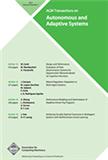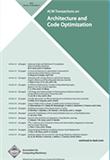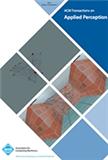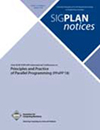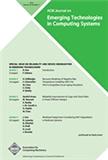Big Data
SCIE
- 雜志名稱:大數(shù)據(jù)
- 簡稱:Big Data
- 期刊ISSN:2167-6461
- 大類研究方向:工程技術(shù)
- 影響因子:2.106
- 數(shù)據(jù)庫類型:SCIE
- 是否OA:No
- 出版地:UNITED STATES
- 年文章數(shù):26
- 小類研究方向:工程技術(shù)-計(jì)算機(jī):跨學(xué)科應(yīng)用
官方網(wǎng)站:https://www.ibm.com/big-data/us/en/
Big Data
英文簡介Big data analytics is the use of advanced analytic techniques against very large, diverse data sets that include structured, semi-structured and unstructured data, from different sources, and in different sizes from terabytes to zettabytes.Big data is a term applied to data sets whose size or type is beyond the ability of traditional relational databases to capture, manage and process the data with low latency. Big data has one or more of the following characteristics: high volume, high velocity or high variety. Artificial intelligence (AI), mobile, social and the Internet of Things (IoT) are driving data complexity through new forms and sources of data. For example, big data comes from sensors, devices, video/audio, networks, log files, transactional applications, web, and social media — much of it generated in real time and at a very large scale.Analysis of big data allows analysts, researchers and business users to make better and faster decisions using data that was previously inaccessible or unusable. Businesses can use advanced analytics techniques such as text analytics, machine learning, predictive analytics, data mining, statistics and natural language processing to gain new insights from previously untapped data sources independently or together with existing enterprise data.
Big Data
中文簡介大數(shù)據(jù)分析是對非常大、多樣的數(shù)據(jù)集使用先進(jìn)的分析技術(shù),這些數(shù)據(jù)集包括結(jié)構(gòu)化、半結(jié)構(gòu)化和非結(jié)構(gòu)化數(shù)據(jù),來自不同的源,大小從TB到Zettabytes不等。大數(shù)據(jù)是一個用于數(shù)據(jù)集的術(shù)語,其大小或類型超出了傳統(tǒng)關(guān)系數(shù)據(jù)庫捕獲、管理和處理低延遲數(shù)據(jù)的能力。大數(shù)據(jù)具有以下一個或多個特征:高容量、高速或高多樣性。人工智能(AI)、移動、社會和物聯(lián)網(wǎng)(IOT)正通過新的數(shù)據(jù)形式和來源推動數(shù)據(jù)復(fù)雜性。例如,大數(shù)據(jù)來自傳感器、設(shè)備、視頻/音頻、網(wǎng)絡(luò)、日志文件、事務(wù)性應(yīng)用程序、網(wǎng)絡(luò)和社交媒體——其中大部分都是實(shí)時生成的,而且規(guī)模非常大。對大數(shù)據(jù)的分析允許分析師、研究人員和業(yè)務(wù)用戶使用以前無法訪問或無法使用的數(shù)據(jù)做出更好更快的決策。企業(yè)可以使用先進(jìn)的分析技術(shù),如文本分析、機(jī)器學(xué)習(xí)、預(yù)測性分析、數(shù)據(jù)挖掘、統(tǒng)計(jì)和自然語言處理,獨(dú)立地或與現(xiàn)有企業(yè)數(shù)據(jù)一起從以前未開發(fā)的數(shù)據(jù)源獲得新的見解。
Big Data
中科院分區(qū)| 大類學(xué)科 | 分區(qū) | 小類學(xué)科 | 分區(qū) | Top期刊 | 綜述期刊 |
| 計(jì)算機(jī)科學(xué) | 4區(qū) | COMPUTER SCIENCE, INTERDISCIPLINARY APPLICATIONS 計(jì)算機(jī):跨學(xué)科應(yīng)用 COMPUTER SCIENCE, THEORY & METHODS 計(jì)算機(jī):理論方法 | 4區(qū) 4區(qū) | 否 | 否 |
Big Data
JCR分區(qū)| JCR分區(qū)等級 | JCR所屬學(xué)科 | 分區(qū) | 影響因子 |
| Q1 | COMPUTER SCIENCE, THEORY & METHODS | Q1 | 4.426 |
| COMPUTER SCIENCE, INTERDISCIPLINARY APPLICATIONS | Q2 |
Big Data
中科院JCR分區(qū)歷年趨勢圖Big Data
影響因子精選同類領(lǐng)域期刊,熱門推薦輕松get~
-
- ACM Transactions on Autonomous and Adaptive Systems
- 期刊ISSN:1556-4665
- 大類研究方向:工程技術(shù)
- 影響因子:
- 數(shù)據(jù)庫類型:SCIE
- 咨詢投稿
-
- ACM Transactions on Architecture and Code Optimization
- 期刊ISSN:1544-3566
- 大類研究方向:工程技術(shù)
- 影響因子:1.444
- 數(shù)據(jù)庫類型:SCIE
- 咨詢投稿
-
- ACM Transactions on Applied Perception
- 期刊ISSN:1544-3558
- 大類研究方向:工程技術(shù)
- 影響因子:
- 數(shù)據(jù)庫類型:SCIE
- 咨詢投稿
-
- ACM Transactions on Algorithms
- 期刊ISSN:1549-6325
- 大類研究方向:工程技術(shù)
- 影響因子:
- 數(shù)據(jù)庫類型:SCIE
- 咨詢投稿
-
- ACM SIGPLAN NOTICES
- 期刊ISSN:0362-1340
- 大類研究方向:工程技術(shù)
- 影響因子:
- 數(shù)據(jù)庫類型:
- 咨詢投稿
-
- ACM Journal on Emerging Technologies in Computing Systems
- 期刊ISSN:1550-4832
- 大類研究方向:工程技術(shù)
- 影響因子:2.013
- 數(shù)據(jù)庫類型:SCIE
- 咨詢投稿
精選常見問題,答疑解惑輕松get~
- 三篇ssci論文怎么同時投出去
- 中文核心和sci哪個影響力更大
- 中科院一區(qū)和JCR一區(qū)期刊占比區(qū)別
- 發(fā)ssci如何快速找合適的期刊
- 資源保護(hù)方面論文投sci指導(dǎo)
- 外貿(mào)行業(yè)論文發(fā)ssci周期長嗎
- 國外的sci投到錄用一般多久
- ssci期刊國內(nèi)認(rèn)可度
- 核能應(yīng)用論文翻譯英文發(fā)sci容易的方法
- 人口老齡化研究論文符合ssci領(lǐng)域嗎
- sci開源和不開源分別是什么意思?有什么影響?
- ssci發(fā)表是高水平學(xué)術(shù)論文嗎
- 生態(tài)修復(fù)主題英文論文會收錄哪些數(shù)據(jù)庫
- 哲學(xué)專業(yè)論文發(fā)英文期刊
- 中科院sci四個區(qū)的劃分
- ssci期刊和sci期刊的區(qū)別
- ESCI和SCIE要分清
- ssci送審論文多久出結(jié)果
- ssci論文二作有用嗎
- 水土保持類英文期刊好選嗎
- ssci期刊論文一定會檢索嗎
 投稿咨詢
投稿咨詢

